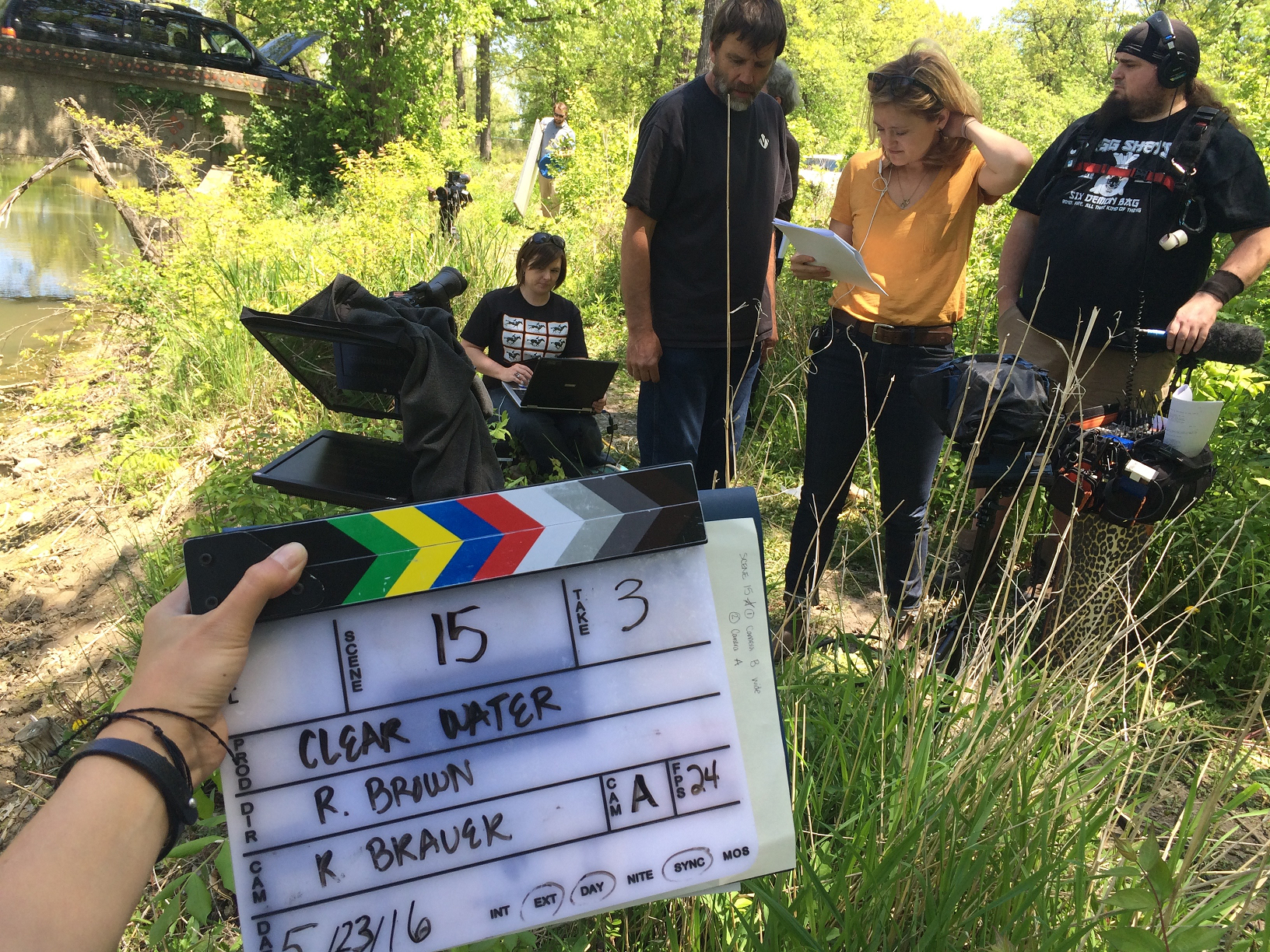
A new film shows the progress on the waterfront
Randin Brown grew up in Farmington Hills, Michigan. She’s working these days in Los Angeles as an assistant director on television shows and movies, including Transformers 3 (Dark of the Moon).
Now, she’s directed her first documentary called Clear Water: Detroit’s Riverfront Revival, to be shown as part of the Detroit’s Freep Film Festival on April 15th.
Brown tells Great Lakes Now, “It’s a documentary that traces the River Rouge watershed’s recovery from 1969 when the Rouge River actually caught fire to present day.”
Cleveland’s Cuyahoga River has been immortalized as America’s burning river, but many people don’t know that waterways in Chicago, Buffalo and here in Detroit have been set ablaze too.
Reports said the Rouge River fire rose fifty feet in the air.
The Rouge runs into the Detroit River, which feeds into Lake Erie, like the Cuyahoga.
“It took something that horrific to happen for us to making steps in the right direction,” Brown says. Brown started documenting the progress on Detroit’s riverfront in 2014 and finished the film early last year.
She says it’s based on the book Burning Rivers by John Hartig, Great Lakes Now contributor and the recently retired manager of the Detroit River International Refuge.
Brown learned about Hartig’s book from her father Bob Brown, also an independent filmmaker who told her, “I think there’s a real interesting story here.”
We’ve seen reports of Detroit’s comeback, but Brown said her film takes a different point of view.
It’s a recovery story, “not from a business standpoint, not from an automotive standpoint,” Brown said, “but from an environmental standpoint.”

Director Randin Brown is the subject of a shot taken by producer and sister Mallory Brown in the documentary Clear Water: Detroit’s Riverfront Revival, courtesy of Bob Brown
Hartig tells Great Lakes Now, “Many people still don’t know the revival of the Detroit River represents one of the most remarkable ecological recovery stories in North America. Hopefully, the film will help get this story out.”
Brown says she focused not only on the past degradation of the water, but the community involvement, the cleanup and now, the conservation efforts. “Thanks to the Great Lakes Restoration initiative, we still continue to see progress,” Hartig said.
He points to the return of lake sturgeon in the Detroit River because of the construction of spawning reefs in Belle Isle.
Where are we now in that recovery?
“There’s always room for improvement,” Brown says.
Hartig says he worries because of today’s political climate.
“I am concerned about backsliding on environmental regulations and the future of the Great Lakes Restoration Initiative,” Hartig says. “Although the federal budget included $300 million for the GLRI in this year’s budget we have delisted only four of 43 Areas of Concern.”
Those 43 areas include locations in the U.S. and Canada.
“Sustained money will be needed to restore all uses in all Areas of Concern,” Hartig said.
While Brown has been living in California for the past eleven years, she said the film is totally a local project, with the production crew all from Michigan.
That except for a couple of notable former Detroiters who lent their voices to the film.
Film and television star Tom Skerritt, who grew up in the city, provides the voice of the river.
Pam Dawber, originally from Farmington Hills and best known from the TV comedy series Mork and Mindy narrates.
Brown said Dawber is passionate about Detroit and will be present for a panel with the film’s showing at 2:30pm, Sunday, April 15th.
See it at the Detroit Historical Museum as part of the Freep Film Festival.
Caption: What is Detroit? A city on a river. Here’s a preview of Clear Water: Detroit’s Riverfront Revival.




